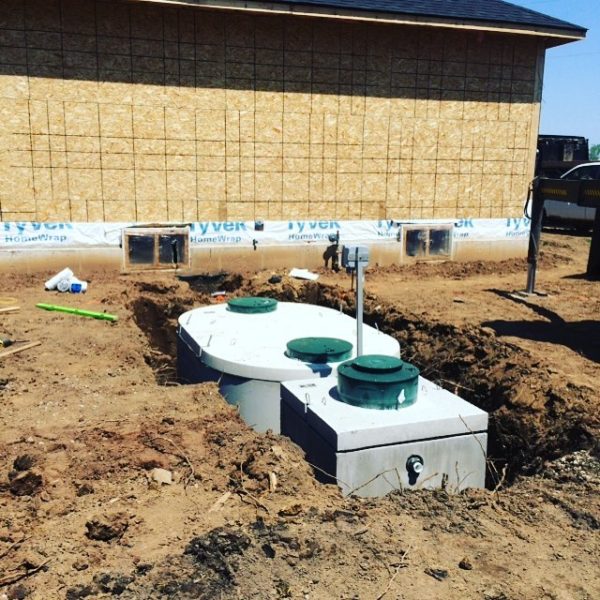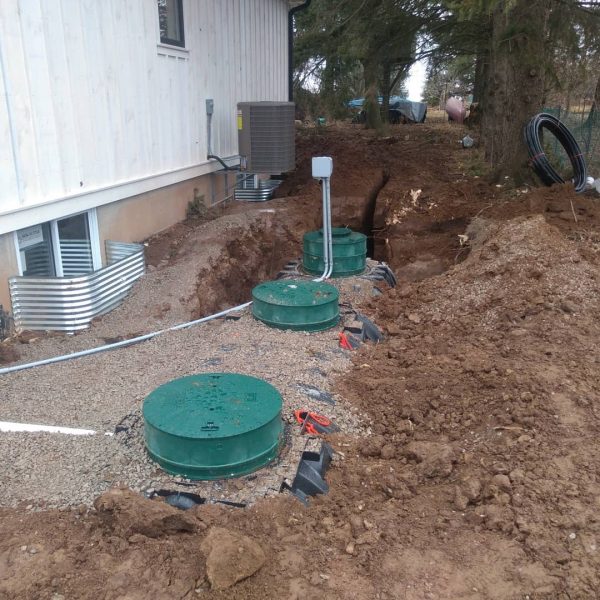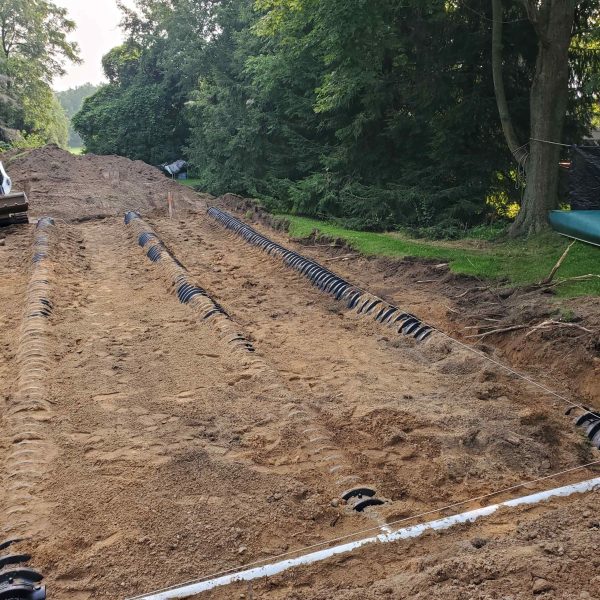Locating your septic system involves a combination of indoor and outdoor observations, consulting records, and sometimes professional assistance. Follow these steps to identify your system’s components accurately and safely.
Locating the Septic Tank
Step 1: Start Indoors
- Find the Main Sewer Line:
- Check your basement or crawlspace for the main sewer line exiting your house.
- Look for a large-diameter pipe (typically ABS or cast iron) positioned at waist height in a full basement or at floor level in a crawlspace.
- Note the direction the pipe exits your home; the septic tank is generally 2–6 meters from that point outside.
Step 2: Check Outdoors
- Look for Access Lids or Risers:
- Search for plastic lids (approximately 60 cm diameter) or square concrete lids (about 60 cm x 60 cm).
- If no lids are visible, they may be buried. Use a metal rod or septic probe to gently probe the ground in the suspected area, taking care not to damage pipes or tank components.
- Roof Vent Clues (Older Homes):
- Locate the sewer vent on the roof (a 3- or 4-inch pipe). Its position often aligns with the main sewer line, indicating the tank’s location.
- Most tanks are located about 1.5–2 meters outside the foundation wall.
- Excavation for Access:
- Once located, dig up the septic tank lids. Typically, there are two lids that should be accessed for maintenance.
- Consider installing risers to grade for easier future access.
Examples of septic tank lids:
Step 3: Seek Professional Help if Needed
Professionals have tools like flushable electronic locators and extensive experience to locate septic tanks without damaging your property.
Locating the Septic Bed
- Look for Visual Clues in the Yard:
- Search for flat areas with minimal trees or heavy landscaping.
- Raised sand beds appear as bumps, while in-ground beds may show thicker, greener grass due to nutrient enrichment.
- Older drain fields may exhibit parallel stripes or depressions.
- Specialized Equipment:
- If you cannot locate the bed visually or through records, hire a professional equipped with locating devices and sewer cameras.
Examples of septic beds before covering:
Additional Research
- Property Records:
Review blueprints, building permits, and other documents for septic system details.
- Municipality Records:
Your local municipality may have historical records or building permits that provide helpful information.
- Ask Neighbors:
Long-time residents in your area may know the general location of your septic system.
Locating your septic system is critical for maintenance and compliance with Part 8 of the Ontario Building Code, which regulates on-site sewage systems. If you’re unable to locate your system or require assistance, contact a professional to ensure proper handling and servicing.






























